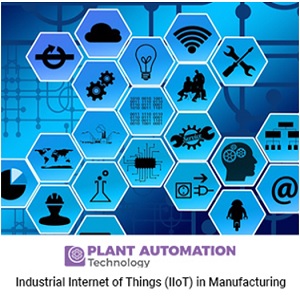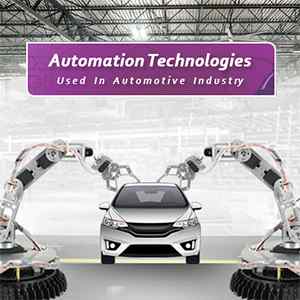Industrial Internet of Things (IIoT) in Manufacturing

In the industrial internet of things (IIoT), intelligent sensors and actuators are used to improve production processes. IIoT solutions enable manufacturers to run more intelligent operations using linked assets, real-time analytics, and monitoring to be flexible, informed, and in control through the industrial internet. Basically, IIoT posits that smart machines are superior to people at both collecting and analyzing data in real time as well as conveying critical information for better business decisions.
Connected sensors and actuators enhance business intelligence initiatives by allowing companies to identify inefficiencies and problems earlier, saving time and money. The IIoT has enormous potential for improving supply chain efficiency, supply chain traceability, sustainable and green manufacturing methods, and quality control in particular. IIoT is essential to activities like Predictive Maintenance (PdM), improved field service, energy management, and asset tracking in an industrial setting.
How does IIoT function?
The Internet of Things (IIoT) is a network of intelligent devices linked together to create systems that collect, exchange, and analyze data. A typical industrial IoT ecosystem includes:
- public and/or private data communications infrastructure.
- analytics and applications that provide business insights from raw data
- data storage for IIoT device generated data; and people
- linked devices that can detect, communicate, and store information about themselves.
These intelligent assets and edge devices transfer data directly to the data communications network. This is where it is transformed into useful information about how a certain piece of equipment is performing. Both predictive maintenance and business process optimization can be done using this data.
Which sectors are utilizing IIoT?
The IIoT is utilized by a wide range of businesses. The manufacturing process for automobiles uses IIoT devices as one example. Industrial robots are widely used in the automobile industry, and the IIoT can help preventatively maintain these systems and identify any issues before they can affect production.
IIoT devices are also widely used in the agriculture sector. Industrial sensors gather information on soil moisture, nutrients, and other factors to help farmers grow the most productive crop possible. Industrial IoT equipment is being used in the oil and gas sector. Some oil corporations have a fleet of unmanned aircraft that can scan pipelines via thermal and visual imaging. To ensure safe operations, this data is merged with information from various kinds of sensors.
What advantages does the IIoT offer?
- Predictive maintenance
- Asset tracking
- Facility management
- just-in-time manufacturing
- Connecting remote assets
- more user-friendly interfaces.
- Information sharing across plants
- process and behavior monitoring and increased machine utilization.
The ability to perform predictive maintenance is one of the most frequently cited advantages of IIoT devices utilized in the manufacturing sector. Businesses can forecast when a machine will need maintenance using real-time data supplied by IIoT technologies. In this manner, the required maintenance can be carried out before a failure happens. This can be especially useful in a production line, where a machine failure could cause a work stoppage and incur significant expenditures. An organization can increase operational effectiveness by taking preventative measures to address maintenance issues.
Increased field service effectiveness is another advantage. Field service technicians may correct minor problems in customer equipment before they cause disruption to consumers thanks to IIoT technologies. These technologies can identify possible problems before they become serious ones. These technologies may also give field service technicians knowledge of the components they require to complete a repair. In this manner, when a service call is made, the technician will have the required parts with them.
Another benefit of IIoT is asset tracking. Asset management systems allow suppliers, manufacturers, and customers to monitor the whereabouts, condition, and status of goods across the supply chain. In the event that the items are damaged or in danger of being damaged, the system immediately notifies the relevant parties. This provides them with the opportunity to take corrective or preventive action.
IIoT also enhances customer satisfaction. When manufacturers and product designers connect their products to the internet of things, they can create more customer-centric product roadmaps. This way, data about how customers use manufacturers' products can be collected and analyzed. In addition, IIoT improves facility management. Machines used in manufacturing are prone to wear and tear, which can be exacerbated by specific manufacturing conditions. Temperature changes, vibrations, and other elements that may lead to less-than-ideal operating conditions can be monitored by sensors.
IIoT is changing the game for manufacturers. IIoT-connected machines capture and communicate real-time data more accurately and consistently than previously possible. This data enables organizations to break open data silos, gain access to information at every level, and make informed business decisions backed by data.
SUMMARY
IoT devices are being used more frequently in digital transformations. This will be especially true for businesses as they work to digitize their supply networks and production processes. IIoT data will be incorporated into big data analytics as they advance, enabling businesses to recognize changing situations in real time and take appropriate action.







